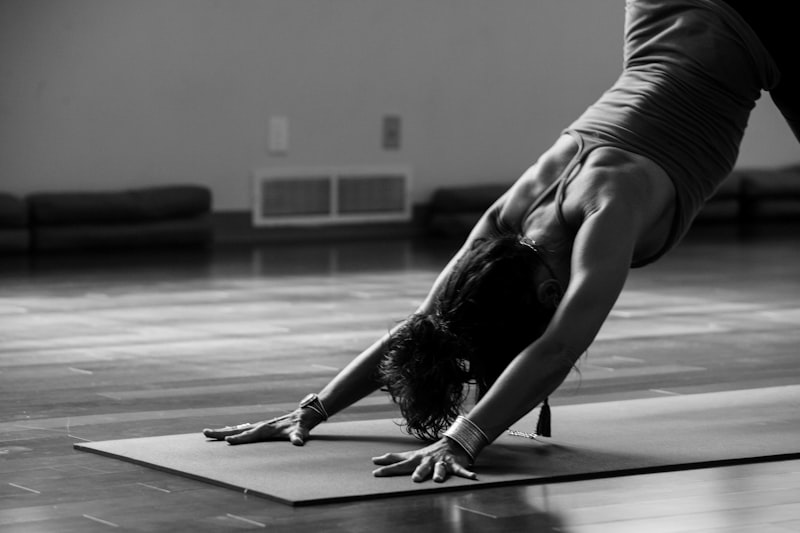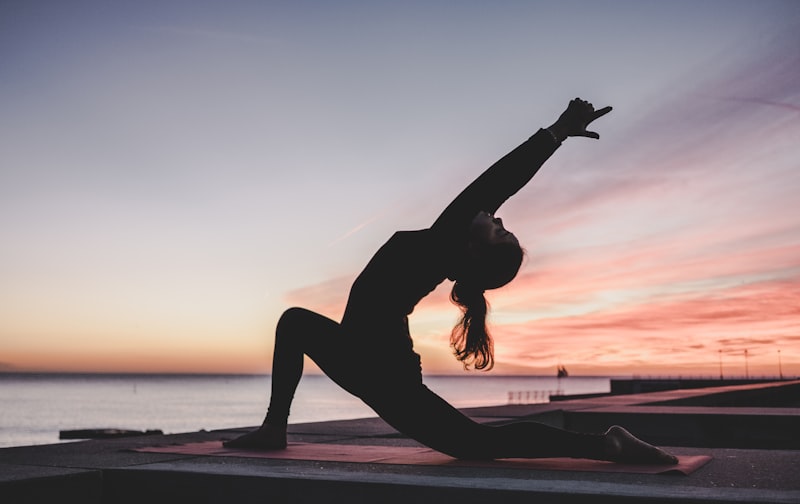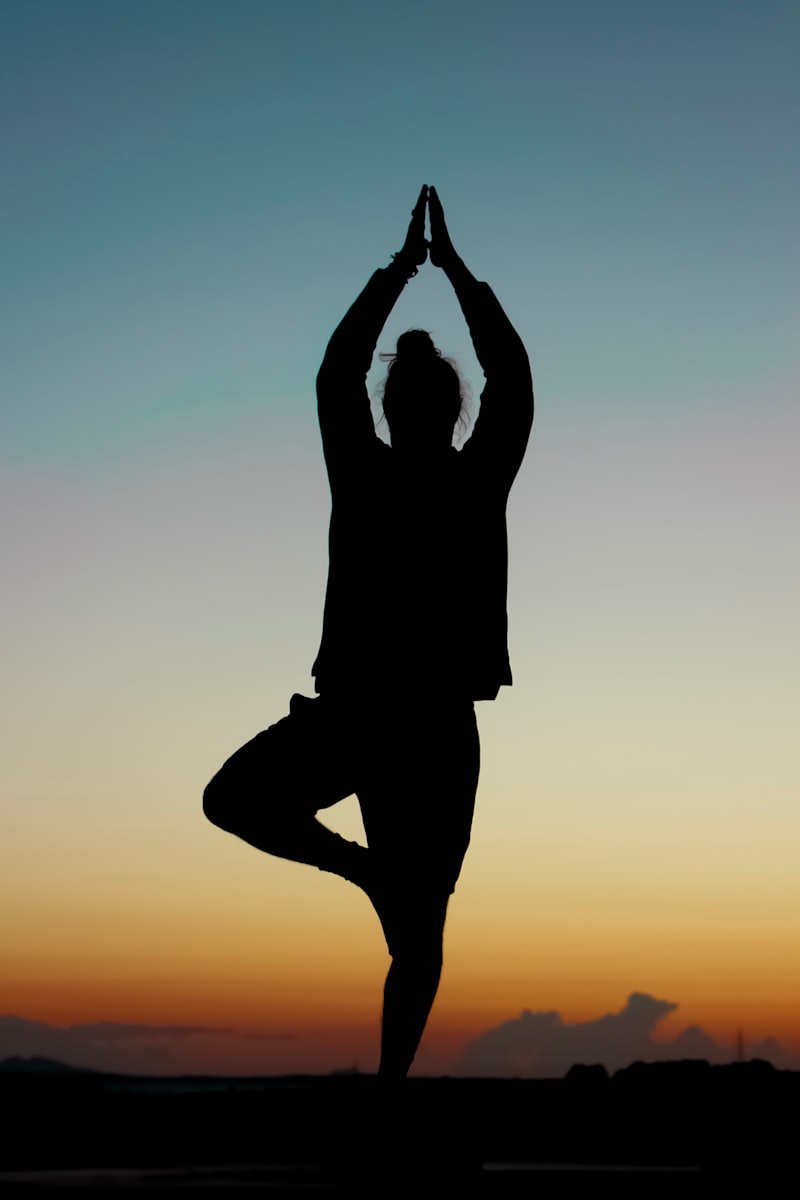Ever wondered how yoga could be your secret weapon for improving balance and stability? Picture this: standing firm like a mountain, yet as agile as a dancer. Yoga isn’t just about stretching or striking poses; it’s a powerful practice that enhances your body’s equilibrium and steadiness.
One of the fundamental aspects of yoga is its ability to strengthen your core muscles. When you engage in poses like Tree Pose (Vrikshasana) or Warrior III (Virabhadrasana III), you’re not only balancing on one leg but also activating deep abdominal muscles that support your spine. Over time, this strengthens your core, which plays a crucial role in maintaining overall stability.
Moreover, yoga improves proprioception – your body’s sense of its position in space. Through poses that challenge your balance, such as Half Moon Pose (Ardha Chandrasana) or Eagle Pose (Garudasana), you train your brain to coordinate with your muscles more effectively. This heightened awareness translates into better balance in daily activities and reduces the risk of falls, especially as we age.
Beyond physical benefits, yoga cultivates mental steadiness. Each pose requires concentration and focus. As you hold a posture like the Extended Hand-to-Big-Toe Pose (Utthita Hasta Padangusthasana), you learn to calm the mind and stay present in the moment. This mental discipline carries over into everyday life, helping you stay centered amidst challenges.
For those who struggle with balance issues, yoga offers a safe and gentle way to improve. Unlike more strenuous exercises, yoga is low-impact and can be modified to suit different abilities. Whether you’re a beginner or an experienced practitioner, there are poses and practices that can enhance your stability over time.
Harnessing Harmony: Yoga Poses That Enhance Balance and Stability
Yoga isn’t just about flexibility; it’s also about balance and stability. These two elements are crucial not only on the yoga mat but also in daily life. Whether you’re a seasoned yogi or just starting out, incorporating poses that enhance balance and stability can significantly improve your practice and overall well-being.

One of the foundational poses for balance is the Tree Pose (Vrikshasana). This pose requires you to stand on one leg while placing the sole of the other foot against the inner thigh or calf of the standing leg. It challenges your balance and strengthens your leg muscles and core. Imagine yourself as a sturdy tree, rooted deeply into the ground, swaying gently with the breeze but never losing your firmness.
Another effective pose is the Warrior III (Virabhadrasana III). In this pose, you extend one leg backward while leaning forward with your torso parallel to the ground. It not only builds strength in your standing leg but also requires focus and concentration to maintain equilibrium. Picture yourself as a warrior poised for battle, strong and steady even amidst challenges.
For those looking to add a dynamic element to their practice, the Dancer’s Pose (Natarajasana) is perfect. This pose involves standing on one leg while holding the other foot with one hand, extending the leg backward, and reaching forward with the opposite arm. It improves balance, flexibility, and concentration. Think of yourself as a graceful dancer, finding harmony between strength and grace.
By regularly practicing these yoga poses and focusing on balance and stability, you can enhance your physical and mental well-being. Whether you practice yoga for fitness or stress relief, these poses offer a pathway to harnessing harmony within yourself, both on and off the mat.
Finding Equilibrium: How Yoga Transforms Balance and Stability
The practice of yoga involves various poses, such as Tree Pose (Vrikshasana) and Warrior Pose (Virabhadrasana), which challenge balance and coordination. These poses require practitioners to engage muscles throughout the body, from the legs and abdomen to the arms and back, fostering a deep sense of stability and control. By repeatedly practicing these poses, individuals not only improve physical balance but also develop mental focus and clarity.
Beyond the physical benefits, yoga cultivates emotional and mental equilibrium. The meditative aspect of yoga encourages mindfulness and presence in the moment, helping practitioners to manage stress and find inner peace. Breathing exercises, known as pranayama, are integral to yoga practice as they promote relaxation and centering of the mind.
In today’s fast-paced world, where stress and distractions abound, yoga offers a sanctuary for restoring balance. Whether practiced in a studio or at home, the rhythmic flow of yoga sequences guides individuals towards a state of equilibrium, where body and mind are aligned. This holistic approach to wellness not only enhances physical fitness but also supports emotional resilience and mental well-being.


As more people embrace yoga for its transformative effects, the journey towards equilibrium becomes a personal odyssey of self-discovery and growth. Each yoga session becomes an opportunity to reconnect with oneself, to recalibrate and find stability amidst life’s constant flux. Through dedication and practice, yoga empowers individuals to embrace balance, both on and off the mat, fostering a deeper appreciation for the interconnectedness of mind, body, and spirit.
Steady as You Flow: Yoga’s Impact on Balance and Stability
Have you ever marveled at the graceful balance of a yogi holding a pose effortlessly? It’s more than just a display of flexibility; it’s the embodiment of balance and stability cultivated through yoga practice. Yoga, with its ancient roots and modern appeal, offers profound benefits beyond flexibility and relaxation. One of its often-overlooked virtues is its transformative impact on balance and stability.
Yoga postures, or asanas, are designed not only to stretch muscles but also to strengthen them. When you hold poses like Tree Pose (Vrikshasana) or Warrior III (Virabhadrasana III), you engage core muscles and stabilizers. Over time, this engagement builds muscle endurance and enhances proprioception—the body’s awareness of its position in space. Imagine your body becoming a finely tuned instrument, able to maintain equilibrium with ease.
Beyond the physical, yoga cultivates mental steadiness. As you flow through sequences, focusing on breath and movement, your mind learns to concentrate and find stillness amidst challenges. This mental resilience translates into everyday life, where balance isn’t just physical but also emotional and mental.
Whether you’re a beginner or seasoned practitioner, yoga offers something unique. It’s not just about achieving the perfect pose but about the journey towards greater balance—physically, mentally, and emotionally. Each session on your mat becomes a practice of self-discovery and growth, where each small victory in balance echoes larger triumphs in life.
So, next time you step onto your yoga mat, remember that every pose you hold, every breath you take, contributes to your overall stability and balance. Embrace the flow, find your center, and let yoga guide you towards a steadier, more balanced life.
Yoga’s Secret Weapon: Mastering Balance and Stability Through Practice
Imagine yourself on a yoga mat, poised in a tree pose or a warrior stance. Each movement demands not just physical strength but a connection to your center of gravity, an alignment of mind and body. This is where balance and stability come into play, transforming a simple pose into a symphony of concentration and control.
The secret lies in practice. Yoga isn’t about achieving perfection on the first try but about the journey towards it. Each time you waver in tree pose or struggle with a warrior stance, you’re building more than just muscle – you’re cultivating resilience and focus. It’s like mastering a dance where every step teaches you something new about yourself.
Moreover, balance and stability extend beyond the yoga mat. They become life lessons, teaching us how to navigate challenges with grace and poise. Just as a tree sways in the wind but remains rooted, so too do we learn to adapt without losing our core essence.
Consider the metaphor of a tightrope walker. Each step is deliberate, every movement calculated to maintain equilibrium. In yoga, we become our own tightrope walkers, balancing not just on a physical level but also harmonizing our thoughts and emotions.
So, the next time you roll out your yoga mat, remember that mastering balance and stability isn’t just a physical feat – it’s a journey towards self-discovery and inner peace. Through consistent practice and mindful awareness, you unlock the ultimate secret weapon of yoga: a balanced mind, a stable body, and a harmonious spirit.
Grounded in Grace: Elevating Balance with Yoga’s Ancient Techniques
In the serene world of yoga, finding balance is not just a physical feat but a journey of mind, body, and spirit. Rooted in ancient practices, yoga offers a profound way to cultivate harmony within ourselves and with the world around us.
Imagine yoga as a dance of grace where each pose, each breath, flows seamlessly into the next, creating a symphony of movement and stillness. It’s more than just stretching; it’s a mindful practice that connects us deeply to our inner selves. Through centuries-old techniques, yoga teaches us to find stability in the midst of life’s challenges, much like a tree with deep roots standing firm against the wind.
The beauty of yoga lies in its versatility. Whether you’re a beginner or an experienced practitioner, there’s a practice suited for everyone. From gentle Hatha yoga to dynamic Vinyasa flows, each style offers its own unique benefits, promoting strength, flexibility, and inner peace. It’s a holistic approach that nourishes not only the body but also the mind and soul.
Moreover, yoga is a journey of self-discovery. As we move through different poses, we uncover layers of ourselves, releasing tension and embracing a profound sense of calm. It’s about tuning into our breath, listening to our bodies, and honoring the present moment with acceptance and gratitude.
In today’s fast-paced world, where stress and anxiety often dominate, yoga serves as a sanctuary. It teaches us to let go of what no longer serves us, to be present in the here and now. Through its gentle yet powerful techniques, yoga empowers us to find balance amidst chaos, to stand tall like a mountain yet flow like a river.
In essence, yoga is a timeless practice that transcends boundaries. It’s a path of transformation, guiding us towards physical vitality, mental clarity, and spiritual awakening. Grounded in grace, it invites us to explore the depths of our being and to discover the true essence of balance within ourselves and in our lives.
Frequently Asked Questions
How often should I practice yoga to see improvements in stability?
Discover how frequently you should practice yoga to enhance stability. Learn about the optimal practice frequency to achieve noticeable improvements in your stability levels.
What are some beginner-friendly yoga sequences for balance?
Discover effective yoga sequences designed for beginners to improve balance. These sequences focus on foundational poses that enhance stability and coordination, making them ideal for those new to yoga. Explore gentle flows and poses like Tree Pose, Warrior II, and Half Moon Pose, which help build core strength and mindfulness. Start your journey towards better balance with these beginner-friendly yoga sequences.
How does yoga help enhance stability and coordination?
Discover how yoga enhances stability and coordination through a series of balanced poses and mindful movements. By focusing on alignment and breath control, yoga strengthens core muscles and improves proprioception, leading to better balance and coordination in daily activities.
Can yoga exercises prevent falls in older adults?
Yoga exercises can help prevent falls in older adults by improving balance, flexibility, and strength. Regular practice enhances proprioception and body awareness, reducing the risk of falls.
What are the best yoga poses for improving balance?
Discover effective yoga poses that enhance balance, from Tree Pose (Vrikshasana) to Eagle Pose (Garudasana). Each pose strengthens core muscles and improves concentration, promoting better stability and equilibrium.


